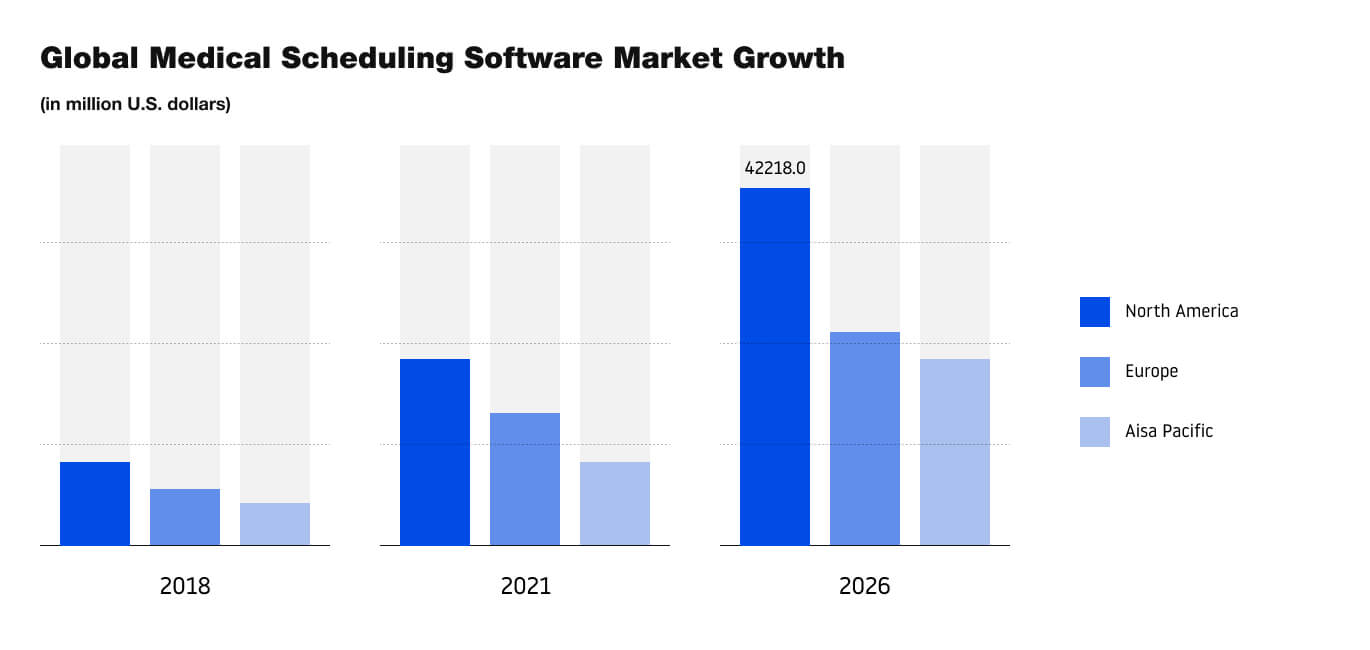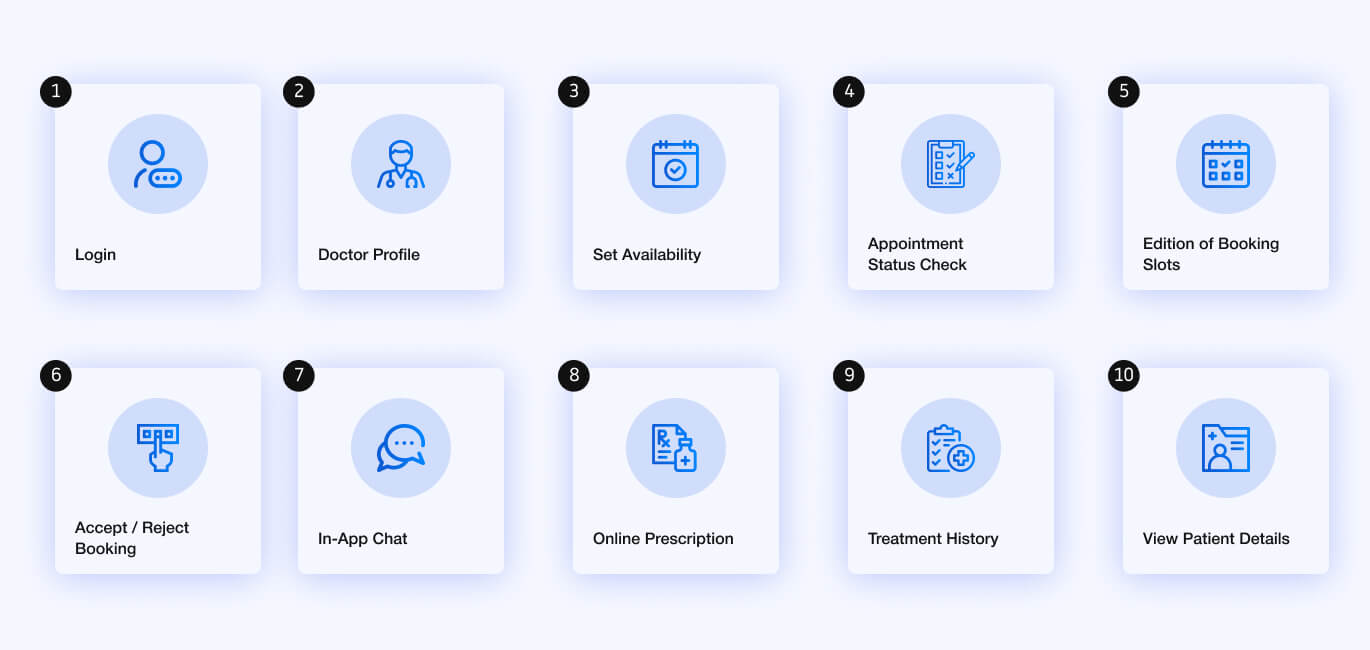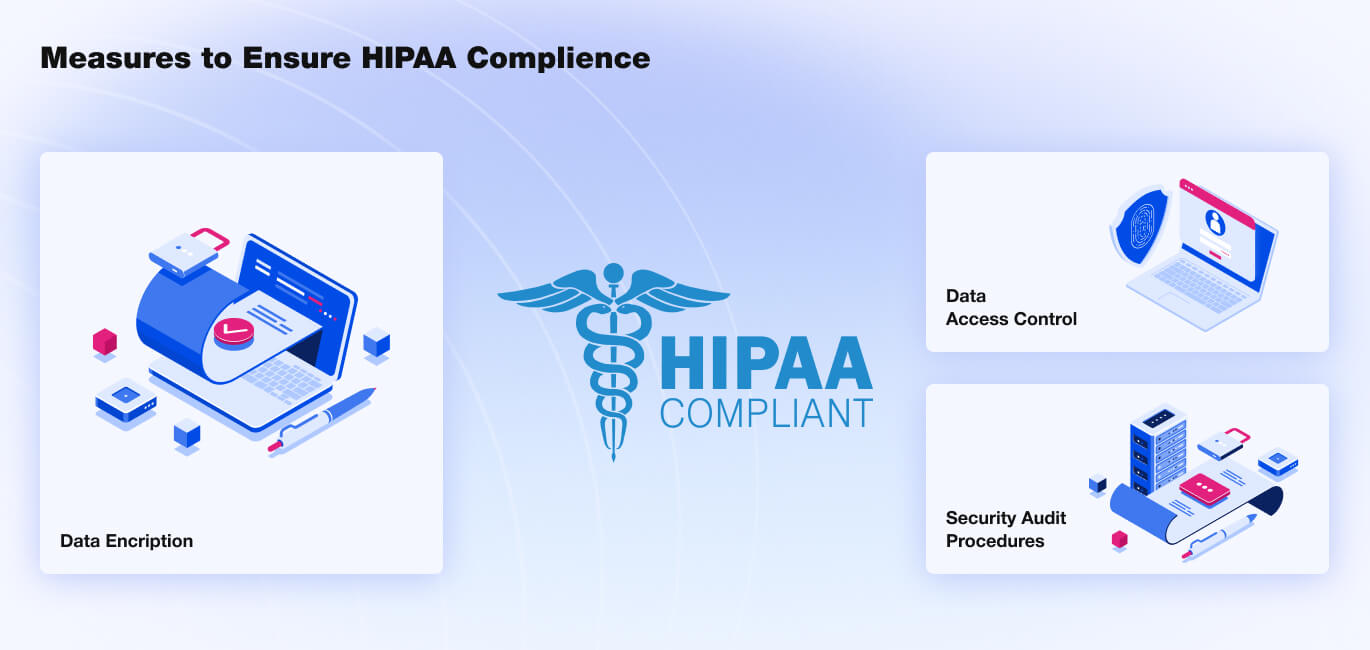Doctor Appointment App Development: Tips on Making a Doctor Booking App for Clinic
 8 February 2022
8 February 2022When making decisions about healthcare, the majority of patients greatly prefer easy access and convenience above the quality of care and insurance coverage. This sounds like a pretty bold statement, but it’s backed up by research from NRC Health. Patients are increasingly seeking easier care experiences: according to the study, 80% of patients would switch providers just for “convenience factors”.
We’re seeing patients make the switch to retail clinics for this very reason, and primary care office visits have been decreasing year over year.
Part of that decline can certainly be attributed to COVID — people are opting for telehealth services for safety reasons. But a large, unignorable factor is also the inconvenience of scheduling appointments. And it’s not just inconvenient for patients: the traditional method of scheduling can also negatively impact the clinic’s bottom line.

If you are thinking about developing a doctor’s appointment app, you’ve come to the right place. We’ll present you with the benefits and downsides of doctor booking app development, as well as key features, costs, and tips on finding developers.
Clinic Appointment Booking Apps: A Market Overview
Innovations like cloud services, IoT, and workflow management techniques are powering the appointment scheduling software market — the industry is experiencing a 12.7% CAGR and is expected to reach $612.5 million by 2026. As seen below, medical scheduling is predominantly taking place in North America.

After the onset of COVID-19, the healthcare system experienced myriad foundational shifts: the rapid implementation of virtual health services, an increase of patient involvement in decision-making, a heavier focus on data analytics, and a global rise in preventative medicine.
Medical scheduling software fits perfectly within the industry’s transformation. Digitally enabled, on-demand scheduling apps seamlessly connect patient-clinician interactions, thereby meeting the increased demand for patient-centric care.
Market Regulations
The US government has recognized the shift towards telemedicine services; the FDA has released guidelines for “Digital Health Content” that help software developers adhere to regulations. However, the Cures Act excluded appointment scheduling apps from regulations intended for Medical Support Software. Such apps, though, are still included under Health Insurance Portability and Accountability Act (HIPAA) because they deal with Protected Health Information (PHI). Therefore, online scheduling apps must have appropriate technical, physical, and administrative safeguards, an overview of which can be found here.
Market Players
Within the medical appointment software scheduling market, key players include:
- American Medical Software
- Beijing Ruiguang
- ByteBloc Software
- Daw Systems
- Delta Health Technologies
- LeonardoMD
- McKesson
- Mediware Information Systems
- Nuesoft Technologies
- StormSource
- TimeTrade Systems
- Total Recall Solutions
- Voicent Communications
- Yocale
How Doctor’s Appointment Scheduling Apps Work
Here’s how a medical scheduling app might work in the real world, from the perspective of the patient and the clinic:
- Patient. The patients use the app to easily schedule appointments at their own convenience. Rather than waiting until office hours to make a call, they can book appointments at any time and from any device. It just takes a few taps, and it’s easy for them to modify or cancel appointments if needed.
- Clinic. Administrative staff can use the app to automate the appointment booking system, thereby saving hours of manual work each week. The app covers the entry of patients’ personal details, paperwork uploading, time slot selection, etc. Staff can also use the app to track revisits and improve their communication with patients.
Reasons to Develop a Doctor’s Appointment Booking App
While doctor’s appointment apps primarily cater to the needs of patients, they also have significant advantages for doctors and clinics. Let’s examine the benefits that all three parties experience.
Benefits for Patients
Besides the convenience of web-based scheduling, patients also get value from:
- Automatic appointment reminders and digital calendar integration
- The ability to upload health-related documentation before an appointment
- Easier of canceling or rescheduling appointments (this can save money on no-show fees)
Benefits for Clinics
Saving Time and Reducing Labor. On average, an appointment scheduling phone call takes eight minutes. While that amount of time can certainly be inconvenient to a patient, it can have an even greater negative impact on a clinic: those minutes add up quickly — and then you also have to factor in calls for rescheduling and confirmations. Online scheduling significantly reduces clinics’ call volume, thereby freeing up time for tasks that aren’t automatable.
Decrease in No-Shows. No-shows can dramatically lower a clinic’s bottom line: the annual healthcare cost for no-shows in the US is a staggering $150 billion. But by implementing an online scheduling app, clinics can reduce no-shows by 6-7 percentage points.
Get Performance Insights. Besides streamlining the scheduling process, these apps provide medical clinics with useful insights into performance; staff can easily see the number of no-shows vs. completed appointments as well as view each patient’s full appointment history. With this kind of data, clinics can compare their productivity before and after implementing a scheduling app. This gives you a way to justify the cost of making the doctor’s appointment booking app.
Benefits for Doctors
Better Patient Satisfaction. By providing convenient scheduling options, doctors can retain patients, as well as improve their engagement and satisfaction rates. As a doctor becomes known for their patient-centric scheduling practices, their new patient acquisition rates may rise as well.
Marketing. Within the appointment scheduling app, the doctor can upload pertinent information, such as their services, certifications, experience, and clinic address. They can also upload photos of themselves, their administrative staff, and their clinic. These personal touches can enhance the user’s experience and increase the patient acquisition rate.
Disadvantages of Medical Appointment Scheduling Apps
There are a couple of disadvantages to consider before implementing an online scheduling app; for instance, there is always a certain degree of risk when handling any information over the internet. When doctors communicate with patients online, there needs to be a heavy emphasis on data protection in order to remain HIPAA-compliant, protect credit card info, and avoid identity theft.
Furthermore, patients may not be able to understand how and when they should be scheduling their own appointments. When speaking with staff on a phone call, they can ask questions to determine if their problem is an emergency or simply requires a routine personal visit/checkup. With online scheduling, however, the patient has to use their best judgment.
How to Make a Doctor Appointment App: Key Features to Include

We’ll start off with the basics: what key features should your Minimum Viable Product (MVP) have?
- Sign-in/Sign-Up. The app should offer easy and secure in-app user registration. There could be an option to sign up via email, phone number, Google account, or organization.
- Patient Account. There needs to be an account portal in which patients can manage their info, view their visit and payment history, upload health-related documents, change their password when needed, and sign out.
- Search Function. This feature would enable patients to search for a doctor within the clinic. Preferably, they should be able to sort doctors by specialty and insurance acceptance.
- Book and Manage Appointments. Patients need to be able to schedule appointments — and because it’s the primary use case, the process should be intuitive and seamless. Preferably, it should also be faster and easier than making a phone call to your office. Patients must also have the ability to reschedule or cancel their appointments within the app.
- Receive Notifications and Reminders. This feature is essential for reducing the no-show rate. In order for a patient to make use of the rescheduling and canceling features, they must first be reminded of the upcoming appointment.
- Admin Panel: This feature lets the clinic monitor the schedule and bookings, view analytics, publish reports, approve and manage doctor profiles, and more.
Those features are what we recommend including at the bare minimum. However, to offer an even better user experience, consider these as well:
- Map. If your medical clinic is part of a network, you may want to include a map that shows the locations of available doctors.
- Doctor Profiles. This lets users get more information on each doctor, including their bio, certificates, languages spoken, training, virtual availability, and more.
- Online Prescriptions. This feature enables doctors to create virtual prescriptions for patients, send them to the patient’s pharmacy of choice, and store the prescriptions in the patient’s account for refills.
- eBilling Gateway. Give staff the ability to create online bills, which patients can pay in-app with a credit card — or perhaps through a payment gateway like Paypal.
- Reviews. Allow your patients to rate appointments on specific criteria (communication style, wait time, expertise, etc.) and leave a written review.
After you’ve released the online scheduling app, gather user feedback to determine if you should add advanced features. Some examples include:
- Medication trackers
- Content library with health tips
- Cost calculator
- Health tracker synchronization
- In-app chat
Your app doesn’t need those features to fulfill its scheduling functions, but they can give your clinic a competitive advantage.
Telehealth Regulations

As mentioned above, appointment scheduling apps must be HIPAA-compliant; therefore, you should work with software developers with extensive experience in creating HIPAA-compliant apps. The full scope of telehealth compliance is too deep to address in this article, but we’d like to give you a few examples of HIPAA telehealth policies and standards to be fulfilled in your app:
- Access Control. Encryption, decryption, automatic logoff, unique user identification, automatic logoff, electronic information authorization
- Audit Controls. Mechanisms that record and examine activity involving protected health information
- Integrity. Procedures that protect EHRs from being improperly altered or destroyed
- Integrity Mechanism. Mechanisms that authenticate protected health information and verify it hasn’t been altered or destroyed.
- Person or Entity Authentication. Verification that the entity seeking access is who they claim to be.
- Transmission Security. Health information stored on the platform or website is fully protected and encrypted.
When consulting with a software development company, make sure to ask how they will introduce mechanisms that fulfill the HIPAA standards listed above.
Cost of Making a Doctor’s Appointment Booking App
Many factors determine the cost of developing a doctor’s appointment app, including the number and complexity of features and the chosen development option. What’s more, you have to consider the sheer number of roles within an app development team — including (but not limited to):
- Project Manager
- UI/UX Designer
- Backend Developer
- iOS Developer
- Android Developer
- QA Engineer
- DevOps
The cost is calculated based on the amount of time that developers spend on various features — so your estimate can vary significantly depending on whether you’re going with an MVP or including advanced telehealth capabilities.
The average cost of developing a scheduling app MVP is approximately $40,000-$60,000, but if you include more features like health tracker synchronization, AI chat, video meetings, and cost calculators, you can see costs rise to $100,000+. And how long does development take? In our experience, MVP development can be completed in 3 to 5 months.
As advanced features can be costly and lengthen the development time, we recommend starting with an MVP, seeing how it performs, and then expanding by adding more features.
How to Make a Doctor’s Appointment Mobile App: Finding Developers
Once you have determined which features you want, it’s time to start looking at an app developer. A lot is at stake with a doctor’s appointment app: it needs to be HIPAA-compliant and offer your patients the best possible experience. You can’t risk contracting an agency that cuts corners: therefore, we recommend looking for developers through sites like Clutch — on such sites, you can compare agencies, read reviews, check rankings, get an estimate of response times, receive quotes, and more.
You can also choose to go the creative community route: on sites like Behance and Dribbble, developers upload portfolios of their work, so you can see their solutions in action. You can search for healthcare projects specifically and view the results of developers with experience in medical apps.
And don’t forget about your own network. Ask around and see if other doctors and clinics have recommendations for you.
During a consultation with a telehealth app developer, here are some questions you could ask below.
- Do you have references from past clients who I could reach out to?
- Do you know how to make a doctor’s appointment booking app?
- Can I see samples of your telehealth work?
- What kinds of apps have you developed in the past?
- Which programming tools do you use during app development?
- Would your team be willing to sign a contract and NDA?
- How much does it cost to make a doctor appointment app with your firm?
- How will we communicate throughout the project?
Regardless of where you’re looking for developers to build a doctor appointment app, you’ll need stringent criteria to narrow down your options. When researching outsource companies, compare the following areas.
- References and reviews
- Experience, specifically in telemedicine apps
- Proof of HIPAA-compliance
- Programming tools
- Legal contracts
- Communication
- Project management techniques
- Development process
Conclusion
Online scheduling apps are just a glimpse at how digital medical services are transforming the healthcare industry. Through such apps, doctors and clinics can provide a more patient-centric experience, reduce no-shows, and significantly cut down on manual hours; with such benefits, it’s no wonder that the medical appointment booking market is experiencing huge growth.
If you’re ready to take advantage of the benefits these apps can bring, Attract Group is ready to help! We are a development agency that has worked on a number of telehealth projects, including Clinicsoft — a cutting-edge CRM for the healthcare industry. Reach out today to get a free quote for our doctor appointment app development.









